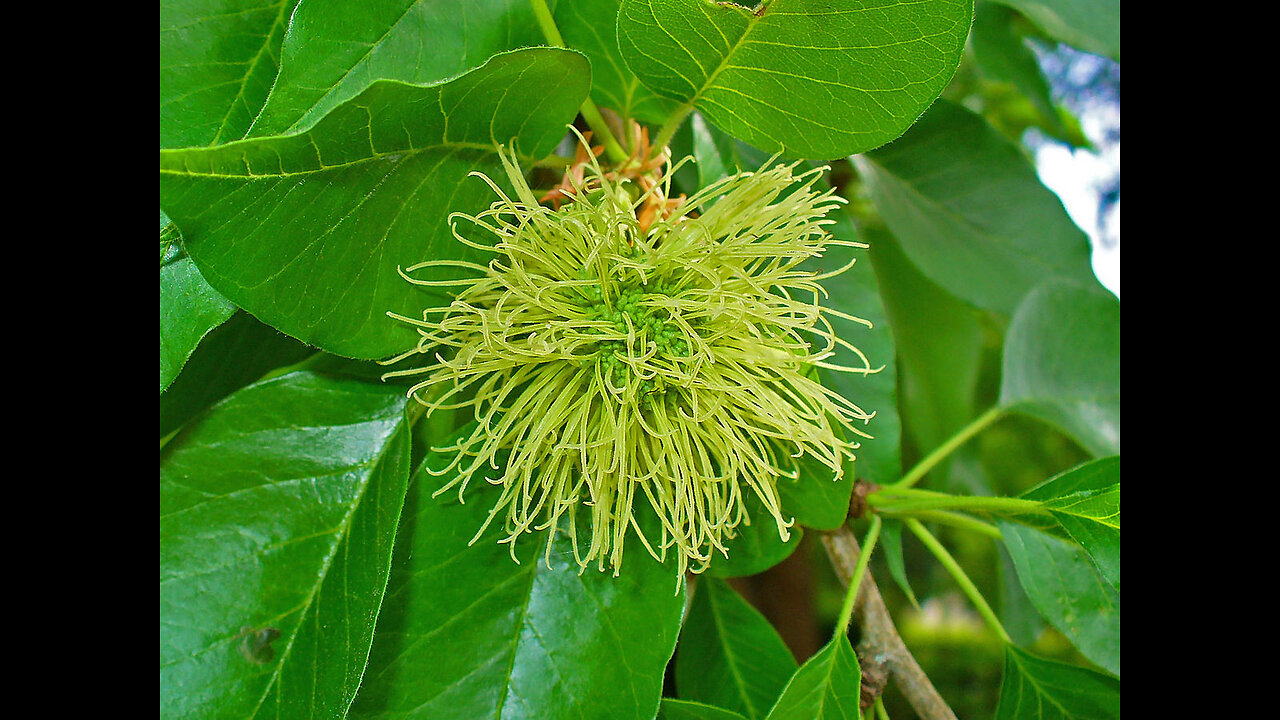Premium Only Content

Maclura Pomifera Tree, Osage Orange Fruit, Hedge Horse Apple
Here is a quick view of the Maclura pomifera tree.
If you're interested in seeds to this beautiful tree please visit our website at:
https://www.theplantattraction.com/products/maclura-pomifera-tree-10-seeds-osage-orange-fruit-hedge-horse-apple?_pos=1&_sid=2a734d7e3&_ss=r
Maclura Pomifera
Also known as: Osage Orange, Hedge Horse Apple Tree, bowwood, bois-d'arc, and bodark.
Here is a medium sized, deciduous tree that typically grows to 35-60’ tall with a broad rounded crown. It is also commonly grown as a hedgerow shrub at much lower heights. It is native to river valleys and rich bottomlands in Arkansas, Oklahoma, Texas and Louisiana, but has been widely planted in a variety of environments throughout the United States, and has naturalized in many areas, particularly east of the Mississippi River.
It features orange-brown bark, ovate shiny dark green leaves, milky sap, thorny twigs and large wrinkled fruit. Leaves turn yellow in fall. Osage orange is dioecious (separate male and female trees), with non-showy greenish male and female flowers appearing in clusters on separate trees in June. Fertilized flowers on female trees give way to inedible grapefruit-sized fruits (3-5” diameter). Each fruit is actually a dense cluster of hundreds of small fruits. The fruit has not been found toxic to livestock.
The wood is long lasting, dense and tough. Native Americans used the wood for bows, hence the common name of bowwood. As settlers pushed westward toward the Mississippi River and beyond in the 1800s, fencing materials were quite expensive and in short supply. In lieu of fences, thousands of miles of hedgerows were planted, with osage orange being a prominent inclusion. Osage orange suckers freely and quickly forms an impenetrable barrier due to its thorns. Other parts of the tree are used in food processing and for making furniture, dyes and pesticides.
Easily grown in average, dry to medium, well-drained soils in full sun to part shade. Prefers uniformly moist soils, but tolerates both dry and wet conditions. Also tolerates poor soils, drought, heat, cold and wind.
USDA Zone: 4 to 9
-
 1:24:24
1:24:24
Criminal Content
3 hours agoTHE DARK KNIGHT (2008) Movie Reaction w/ Coby FIRST TIME WATCHING
181 -
 48:21
48:21
FULL SEND PODCAST
3 hours agoStephen A. Smith Calls out the Democrats and REVEALS LeBron Will Retire Next Year!
13.8K1 -
 51:14
51:14
Candace Show Podcast
2 hours agoBREAKING! Diddy Private Investigators Offer Money To Influencers | Candace Ep 106
54.6K70 -
 1:03:22
1:03:22
In The Litter Box w/ Jewels & Catturd
21 hours agoWW3 WATCH | In the Litter Box w/ Jewels & Catturd – Ep. 694 – 11/19/2024
48K13 -
 1:33:33
1:33:33
The Officer Tatum
2 hours agoLIVE: Biden FLIRTS With WW3, Tom Homan BLASTS Dem Governors, The View Melts down | OT Show EP 11
23.6K26 -
 3:44:23
3:44:23
RanchGirlPlays
20 hours ago🔴 Fallout 76: Will the Aliens Finally Bring Better Servers? 🤣👽
45.6K3 -
 26:15
26:15
Cooking with Gruel
3 hours agoLive With Chef Andrew Gruel - Taking Cooking Questions
27.4K4 -
 48:18
48:18
PMG
17 hours ago $0.15 earned"Hannah Faulkner and Vittoria | FIRST PRO LIFE FASHION COMPANY"
5.94K1 -
 6:02:30
6:02:30
LumpyPotatoX2
7 hours agoTuesday VIBES - #RumbleGaming
28.4K -
 1:59:22
1:59:22
The Quartering
6 hours agoTrump BEATS Felony Charges, Man On Man Kiss CUT From Gladiator Movie, Matt Gaetz Hacked!
103K23